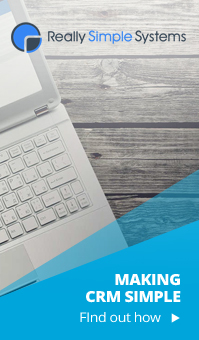
CRM for Large Businesses
There are eight key steps for a large business to consider.
- Review our site
- Define Requirements & Objectives
- Review Shortlist
- Ensure Vendors can meet your needs
- Shortlist two Vendors
- Conduct an Evaluation
- Negotiate
- Choose the Vendor and Deploy your solution
Review our site
This site aims to de-mystify the technology behind buying CRM Software.
Key things to answer at this stage include
- What are the business drivers behind the CRM Purchase? (e.g.
increase revenue, improve customer service)
- What functionality do you need?
- Do you have a preference for a cloud or on-site solution?
Define your Requirements and Objectives
Your requirements list should include the following:
- Vendor Requirements
- Implementer Requirements
- Functional Requirements
- Business Process/Work Flow
- Technical Requirements
- Integration Requirements
- Cost and Budget Requirements
- Implementation Requirements
- Training and Support Requirements
You will note that our recommendations will usually consist of:
- Large and Profitable software companies
- Companies with a large number of customers across many
industries
- Companies with an extensive range of partners and services
options
We do this for important reasons:
- Choosing a CRM system is a business decision with expected system
lifetime of 5-8 years
- Software companies only survive if they can grow their new
customer numbers – it helps fund R&D for new functionality
- They are more likely to be viable and still improving
the products in 5 years time
Once you have defined your business objectives and requirements in your RFP, the next step is to engage these suggested vendors/implementers. Look for vendors who have a solid track record, are familiar with your industry and areas of specific needs.
Prove a vendor meets your needs
After submitting your RFP to vendors on your short list, you will likely need to conduct one-on-one meetings with these vendors to explain your company’s needs and requirements in depth.
Focus on who they have as references customers in your industry and of your size. This will ensure that they understand your industry and the key areas of functionality needed to make the solution a success. Have the vendor setup conference calls or site visits to companies they have worked with in the past.
Shortlist the top two Vendors
Once you have conducted the initial evaluation of vendors on your short list, you need to cut that list down to the top two vendors. Separate the Contenders from the Pretenders!
Although you may have a strong preference for a vendor early in the evaluation process, it is important to keep an open mind. In addition, it provides you some leverage during negotiation.
The key questions are who can your work with; who do you trust to be with you over the long haul? (A typical CRM system may be in place for 5-8 years.)
Conduct Comprehensive Vendor Reviews
This is the time when vendors will need to prove that they can fulfil your CRM needs. Review and compare how the different vendors’ applications work and map to your internal business processes.
Draw up a list of key attributes that you are looking for and score the vendors against the attributes. The Implementers will often have these available and will use them as resources to guide you through the evaluation phase.
Negotiate prior to deciding the vendor
One of the reasons to keep two companies on the shortlist is that you need to be able to negotiate the best terms.
The life-time costs of a CRM system can include:
- Implementation/Consulting costs
- Maintenance and support fees
- Upgrade costs
- Technical support and training
- Conversion from a cloud solution to an on-site solution (or
vice versa)
Having two companies involved in this process may save you significant money.
Date posted: 2014-12-15 | posted by: miked
Tweet



